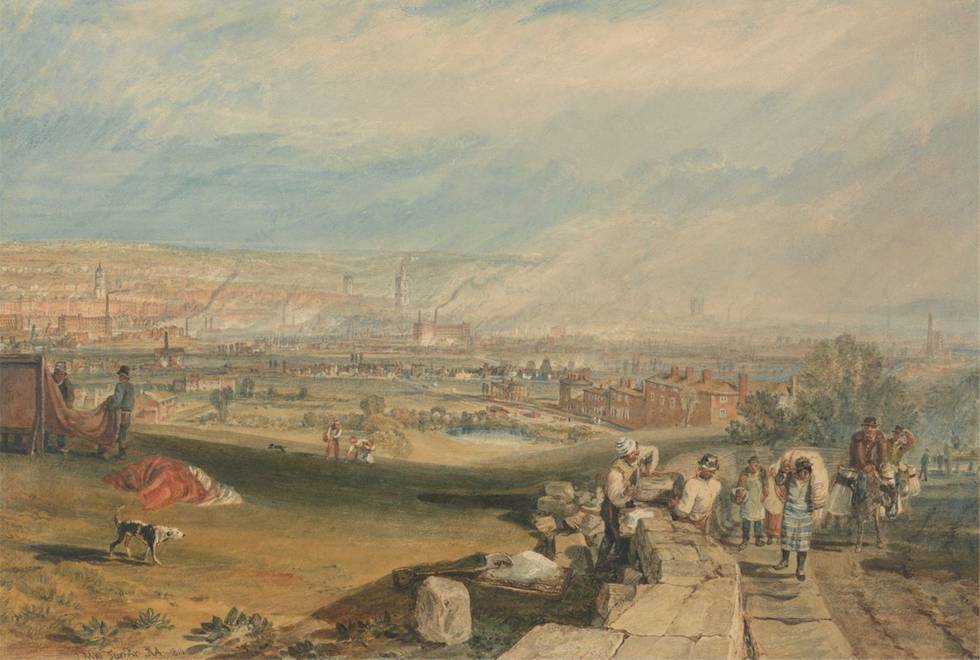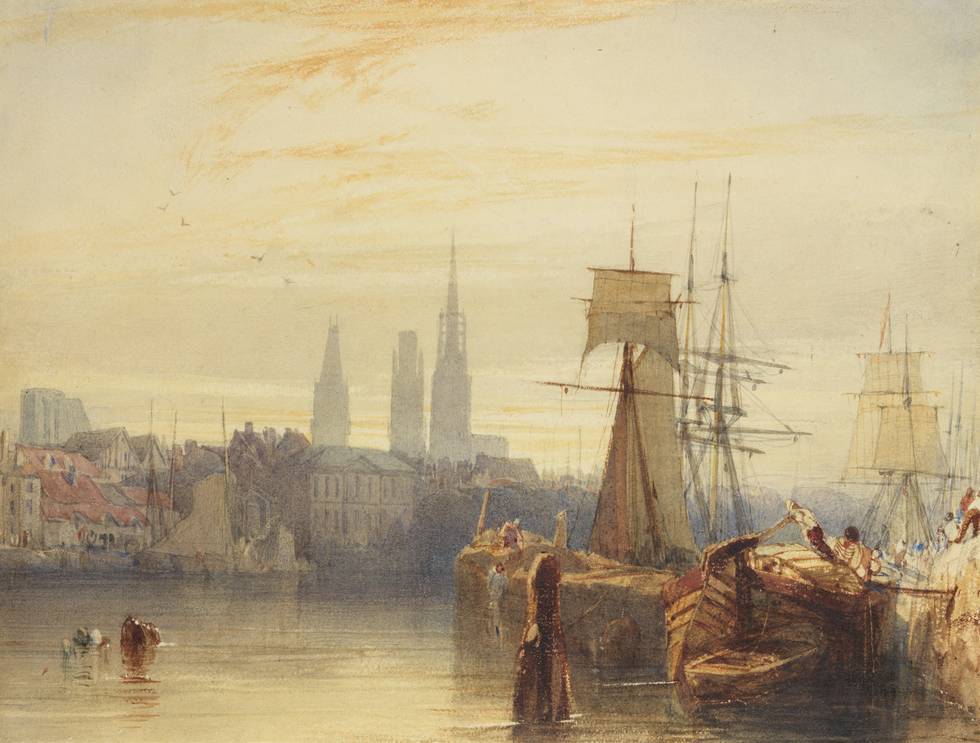In 1791, a huge circular painting was placed on view in a specially constructed building in Leicester Square by Robert Barker, who soon invented a new word to describe it: the panorama. It became a prominent feature within the scene it represented: the world’s largest mercantile and political metropolis – London. By 1791, the city stood at the nexus of commercial, financial and imperial networks. The panorama was the perfect medium to represent the condition modernity; novel, baffling, energetic, impossible to comprehend; networked to a wider world.

Barker’s panorama shows the London where Joseph Mallord William Turner was born in 1775 and grew to adulthood. Turner was born at the very fulcrum of modernity, in Maiden Lane, Covent Garden. His early work was conceived in the picturesque mode, in which landscapes of pleasure were artfully constructed through reference to earlier works, such as those of 17th-century painter Claude Lorrain. But he was too ambitious to continue in this vein. Among Turner’s most starting gestures was to adopt the vast, flat horizon of the panorama in his portrait of his home city London, 1809. Here, Turner merges two radical aesethetic forms, the panoramic and the sublime. As we scan the horizon, we perceive the illegibility of the modern city, a world in which smoke and chimneys, church towers and ship’s masts, cannot be disentangled from each other. As Karl Marx put it, under capitalism, “all that is solid melts into air.” Only St Paul’s and the Royal Naval College speak for the decorum of the premodern order.

In another urban prospect, Leeds, 1816, Turner confronts the condition of modernity directly, in a vista of the textile manufacturing town. Pollution from mill chimneys blends ineffably with the West Yorkshire cloud cover. The vast woollen mills appear as cathedrals of the modern age, while Turner lovingly chronicles the activities of working people in the foreground.
Leeds brings us within ten miles of the site of Grouse Shooting on Beamsley Beacon, which records Turner’s cordial interactions with his patron and friend Walter Fawkes. This seemingly idyllic portrayal of life on a Yorkshire country estate in fact derives from one of the most violent periods of social and political unrest in industrial England. Arson attacks were mounted by the Luddites, mainly unemployed handloom weavers led by the mythic Captain Ned Ludd. Smashing new textile machinery, they demanded a return of the highly paid skilled jobs they had lost; many were apprehended and sentenced to spend the rest of their lives in penal servitude in Australia.
Fawkes was a political radical, who stood successfully for parliament as an anti-slavery candidate in 1806, denounced the Peterloo Massacre in Manchester (1819) and promoted the extension of the parliamentary franchise to include the middle class. Perhaps, then, Turner’s peaceful vision of the Yorkshire moorlands is haunted by the sense of impending revolution and (as Fawkes saw it) the lack of liberty and justice under capitalism’s new regime.

The short-lived Richard Parkes Bonington, a younger star in the world of British art, himself emerged from the crucible of an industrial city whose fortunes rested on textiles. Born in Nottingham in 1789, he was the son of the governor of the city’s gaol. Nottingham lacemakers were especially hard hit by technological change, and it was in Nottingham that the first Luddite violence took place, while Bonington was living in the city’s outskirts as a boy. The Boningtons took the opportunity, post-Waterloo, to move to Calais, where the father had established a lace-making business and Richard studied watercolour painting. Bonington’s works may be understood as a response to the traumatic events that had convulsed the city of Nottingham. The international calamity of Napoleon’s rise and defeat, at huge cost of life, too, placed a huge premium on peace. It is peace that I see as the defining character of Rouen, 1825, the exquisite watercolour in the Wallace Collection. Yet even here there are hints of modern trade and commerce in the vessels moored at the docks. Bonington’s father would have been acutely aware of the fluctuations in the international market for lace and other cloths. For all Bonington’s efforts to deny it, the picturesque medieval city lay within, and not beyond, the clutches of capitalist modernity.
Only Turner, however, confronted the question of modernity head on. In Rain, Steam, and Speed, 1844, Turner explicitly stages a comparison between the old ways and the new, pairing the old stone Thames Bridge at Maidenhead with the new Great Western Railway viaduct. A locomotive speeds towards us, catching up with a hare, the fastest of all native creatures. The technological marvel is magnificent; at the same time it is diabolical, breathing smoke and flames like a beast from hell. Turner saw modernity for what it was, unconstrained capitalism for what it is: exuberant, unstoppable, sublime and murderous.
This article was written by Tim Barringer, Paul Mellon Professor in the Department of the History of Art at Yale University.